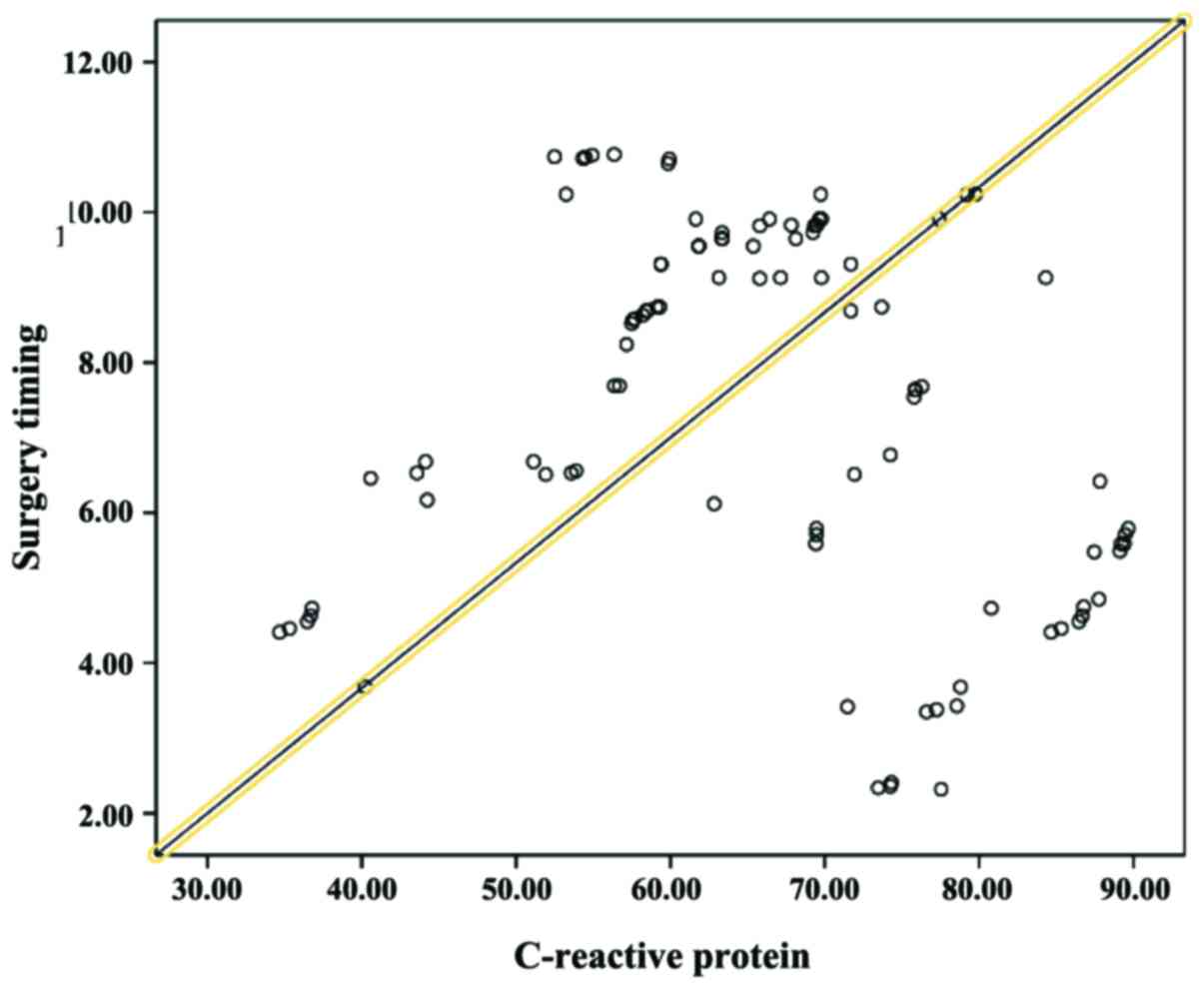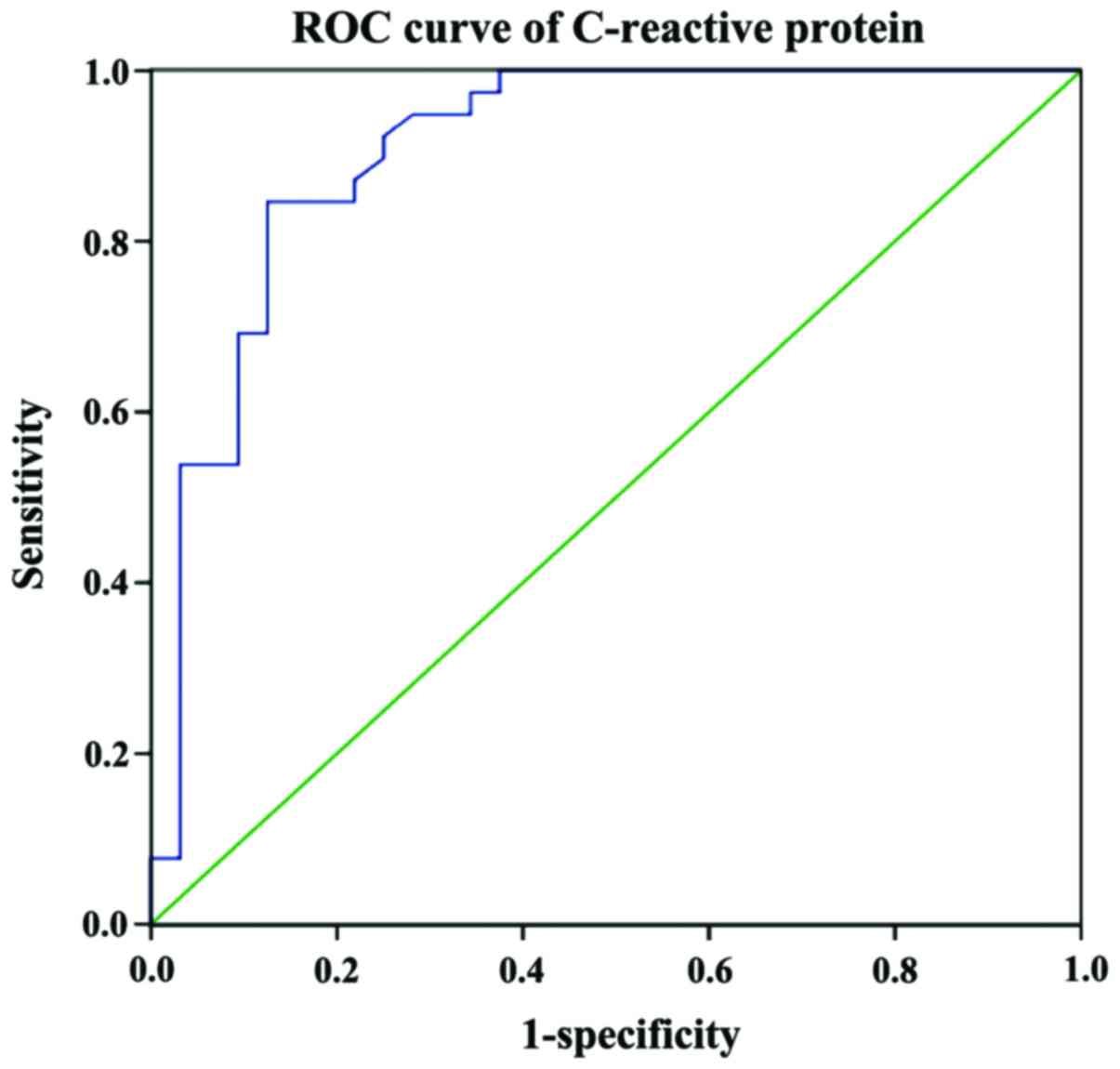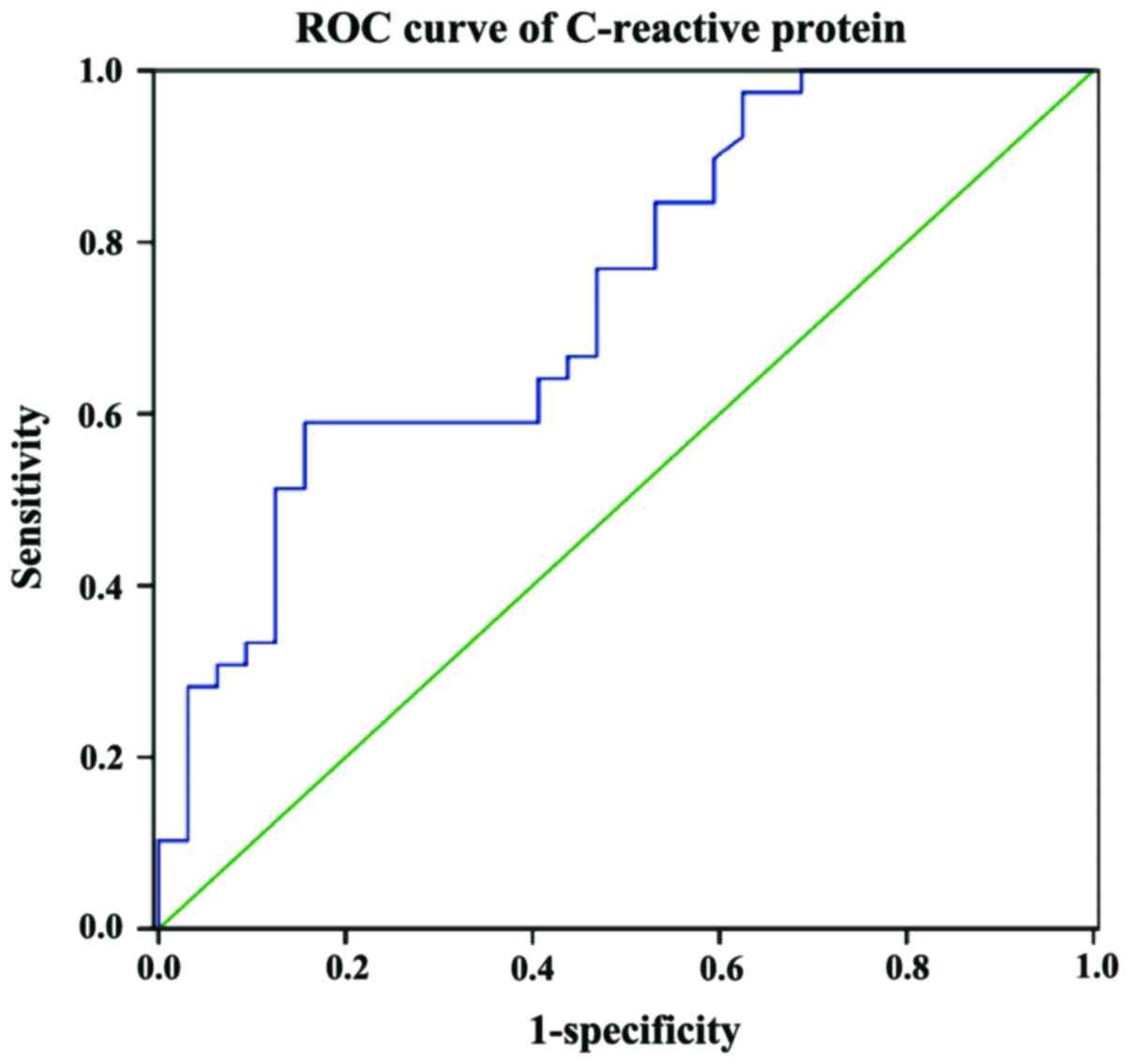|
1
|
Morris BJ, Unger RZ, Archer KR, Mathis SL,
Perdue AM and Obremskey WT: Risk factors of infection after ORIF of
bicondylar tibial plateau fractures. J Orthop Trauma. 27:e196–e200.
2013. View Article : Google Scholar : PubMed/NCBI
|
|
2
|
Yu X, Pang QJ, Chen L, Yang CC and Chen
XJ: Postoperative complications after closed calcaneus fracture
treated by open reduction and internal fixation: A review. J Int
Med Res. 42:17–25. 2014. View Article : Google Scholar : PubMed/NCBI
|
|
3
|
Korim MT, Payne R and Bhatia M: A
case-control study of surgical site infection following operative
fixation of fractures of the ankle in a large U.K. trauma unit.
Bone Joint J. 96-B:1–640. 2014. View Article : Google Scholar : PubMed/NCBI
|
|
4
|
Hur JW, Park YK, Kim BJ, Moon HJ and Kim
JH: Risk factors for delayed hinge fracture after plate-augmented
cervical open-door laminoplasty. J Korean Neurosurg Soc.
59:368–373. 2016. View Article : Google Scholar : PubMed/NCBI
|
|
5
|
Hull PD, Johnson SC, Stephen DJ, Kreder HJ
and Jenkinson RJ: Delayed debridement of severe open fractures is
associated with a higher rate of deep infection. Bone Joint J.
96-B:1–384. 2014. View Article : Google Scholar : PubMed/NCBI
|
|
6
|
Wei SJ, Cai XH, Wang HS, Qi BW and Yu AX:
A comparison of primary and delayed wound closure in severe open
tibial fractures initially treated with internal fixation and
vacuum-assisted wound coverage: A case-controlled study. Int J
Surg. 12:688–694. 2014. View Article : Google Scholar : PubMed/NCBI
|
|
7
|
Kurylo JC, Axelrad TW, Tornetta P III and
Jawa A: Open fractures of the distal radius: The effects of delayed
debridement and immediate internal fixation on infection rates and
the need for secondary procedures. J Hand Surg Am. 36:1131–1134.
2011. View Article : Google Scholar : PubMed/NCBI
|
|
8
|
Watanabe K, Kino Y and Yajima H: Factors
affecting the functional results of open reduction and internal
fixation for fracture-dislocations of the proximal interphalangeal
joint. Hand surg. 20:107–114. 2015. View Article : Google Scholar : PubMed/NCBI
|
|
9
|
Wongwai T, Wajanavisit W and Woratanarat
P: Non-union and avascular necrosis of delayed reduction and screw
fixation in displaced femoral neck fracture in young adults. J Med
Assoc Thai Suppl. 10:S120–S127. 2012.
|
|
10
|
Asif N, Ahmad S, Qureshi OA, Jilani LZ,
Hamesh T and Jameel T: Unstable intertrochanteric fracture fixation
- is proximal femoral locked compression plate better than dynamic
hip screw. J Clin Diagn Res. 10:RC09–RC13. 2016.PubMed/NCBI
|
|
11
|
Wetzel RJ, Minhas SV, Patrick BC and
Janicki JA: Current practice in the management of type I open
fractures in children: A survey of POSNA membership. J Pediatr
Orthop. 35:762–768. 2015. View Article : Google Scholar : PubMed/NCBI
|
|
12
|
Zhang L, Liu Y, Chen S and Wang Y:
Clinical observation of the vitreous surgery for open-globe
injuries in different timing after the trauma. Zhonghua Yan Ke Za
Zhi. 50:121–125. 2014.(In Chinese). PubMed/NCBI
|
|
13
|
Ovaska MT, Mäkinen TJ, Madanat R, Vahlberg
T, Hirvensalo E and Lindahl J: Predictors of poor outcomes
following deep infection after internal fixation of ankle
fractures. Injury. 44:1002–1006. 2013. View Article : Google Scholar : PubMed/NCBI
|
|
14
|
Lin S, Mauffrey C, Hammerberg EM, Stahel
PF and Hak DJ: Surgical site infection after open reduction and
internal fixation of tibial plateau fractures. Eur J Orthop Surg
Traumatol. 24:797–803. 2014. View Article : Google Scholar : PubMed/NCBI
|
|
15
|
Gross CE, P N Chalmers, Ellman M,
Fernandez JJ and Verma NN: Acute brachial plexopathy after
clavicular open reduction and internal fixation. J Shoulder Elbow
Surgery. 22:e6–e9. 2013. View Article : Google Scholar
|
|
16
|
Chapman TWL, Harris NM, Rogers M, Wilson P
and McDiarmid J: Delayed brachial plexopathy in clavicular fracture
with tri-cord neurapraxia and complete recovery. Eur J Plast Surg.
29:295–297. 2007. View Article : Google Scholar
|
|
17
|
Zhang B, Yang M, Zhou Q and Liu Q: Open
reduction and internal fixation of delayed intracapsular comminuted
condylar fracture of mandible with preoperative computer-aided
design. Int J Oral Maxillofac Surg. 44:e313–e314. 2015. View Article : Google Scholar
|
|
18
|
Ruedi TP, Buckley RE and Moran CG: AO
Principles of Fracture Management. 2nd. Thieme; Sttutgart, New
York: pp. 3222007
|
|
19
|
Nanchahal J, Nayagam S, Khan U, Moran C,
Barrett S, Sanderson F and Pallister I: Standards for the
Management of Open Fractures of the Lower Limb. Royal Society of
Medicine Press; London: pp. 8–10. 2009
|
|
20
|
Eriksson AL, Moverare-Skrtic S, Ljunggren
Ö, Karlsson M, Mellstrom D and Ohlsson C: High-sensitivity CRP is
an independent risk factor for all fractures and vertebral
fractures in elderly men: The MrOS Sweden study. J Bone Miner Res.
29:418–423. 2014. View Article : Google Scholar : PubMed/NCBI
|

















